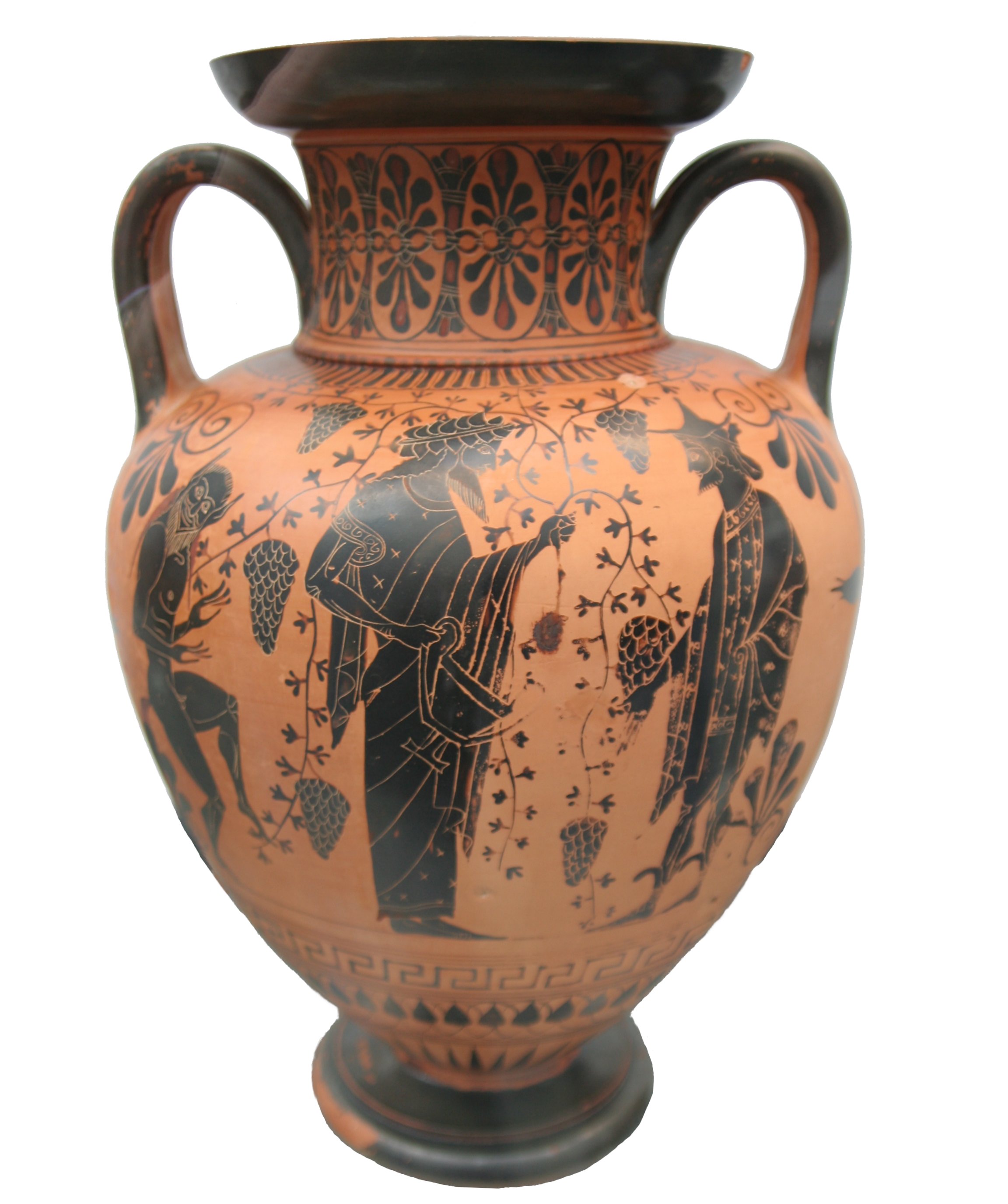|
Limnio
Limnio (LIM-nee-oh) is a red Greek wine grape variety that is indigenous to the Greek island of Lemnos. The grape has had a long history of wine production that may extend back to Ancient Greece with wine historians widely believing it was the grape variety, ''Lemnia'', that was described by Aristotle as producing the famous red Lemnian wine.J. Robinson ''Jancis Robinson's Guide to Wine Grapes'' pg 96 Oxford University Press 1996 According to wine expert Oz Clarke, Limnio is "One of Greece's most important red vines."Oz Clarke ''Encyclopedia of Grapes'' pg 116-117 Harcourt Books 2001 History According to wine expert Jancis Robinson, Limnio was almost certainly the ''Lemnia'' grape described by Aristotle as a specialty of the island of LimnosJ. Robinson ''Vines, Grapes & Wines'' pg 225 Mitchell Beazley 1986 -an assessment shared by other wine experts and historians.A. Domine (ed.) ''Wine'', pp. 729, Ullmann Publishing, 2008 A ''Limnia'' grape was also referenced in Ancient ... [...More Info...] [...Related Items...] OR: [Wikipedia] [Google] [Baidu] |
Lemnos
Lemnos ( ) or Limnos ( ) is a Greek island in the northern Aegean Sea. Administratively the island forms a separate municipality within the Lemnos (regional unit), Lemnos regional unit, which is part of the North Aegean modern regions of Greece, region. The principal town of the island and seat of the municipality is Myrina, Greece, Myrina. At , it is the Greek islands, 8th-largest island of Greece. Geography Lemnos is primarily a flat island, but the western region, particularly the northwest, is rocky and mountainous. At 430 meters above sea level, Mount Skopia is the highest point. The chief towns are Myrina, Greece, Myrina, on the western coast, and Moudros on the eastern shore of a large bay in the middle of the island. Myrina (also called Kastro, meaning "castle") possesses a good harbour. It is the seat of all trade carried on with the mainland. Lemnos also has a 7-hectare desert, the Pachies Ammoudies of Lemnos. Climate The climate in Lemnos is mainly Mediterranean c ... [...More Info...] [...Related Items...] OR: [Wikipedia] [Google] [Baidu] |
Greek Wine
Greece is one of the oldest wine- producing regions in the world and among the first wine-producing territories in Europe. The earliest evidence of Greek wine has been dated to 6,500 years ago where wine was produced on a household or communal basis. In ancient times, as trade in wine became extensive, it was transported from end to end of the Mediterranean; Greek wine had especially high prestige in Italy under the Roman Empire. In the medieval period, wines exported from Crete, Monemvasia and other Greek ports fetched high prices in northern Europe. History The origins of wine-making in Greece go back 6,500 years and evidence suggesting wine production confirm that Greece is home to the second oldest known grape wine remnants discovered in the world and the world's earliest evidence of crushed grapes. As Greek civilization spread through the Mediterranean, wine culture followed.Introduction to Wine Laboratory Practices and Procedures, Jean L. Jacobson, Springer, p. 84 ... [...More Info...] [...Related Items...] OR: [Wikipedia] [Google] [Baidu] |
Ancient Greece (wine)
The influence of wine in ancient Greece helped ancient Greece trade with neighboring countries and regions. Many mannerisms and cultural aspects were associated with wine. It led to great change in Ancient Greece as well. The ancient Greeks pioneered new methods of viticulture and wine production that they shared with early winemaking communities in what are now France, Italy, Austria and Russia, as well as others, through trade and colonization. Along the way, they markedly influenced the ancient European winemaking cultures of the Celts, Etruscans, Scythians and ultimately the Romans.J. Robinson (ed) ''"The Oxford Companion to Wine"'' Third Edition pp. 326–329 Oxford University Press 2006 Origins Viticulture has existed in Greece since the late Neolithic period, with domestic cultivation becoming widespread by the early Bronze Age. Through trade with ancient Egypt, the Minoan civilization on Crete was introduced to Egyptian winemaking methods, an influence most like ... [...More Info...] [...Related Items...] OR: [Wikipedia] [Google] [Baidu] |
Grape Variety
This list of grape varieties includes cultivated grapes, whether used for wine, or eating as a table grape, fresh or dried (raisin, Zante currant, currant, sultana (grape), sultana). For a complete list of all grape species, including those unimportant to agriculture, see ''Vitis''. The term ''grape variety'' refers to cultivars (rather than the Variety (botany), botanical varieties that must be named according to the International Code of Nomenclature for algae, fungi, and plants). Single-species grapes While some of the grapes in this list are hybrids, they are hybridized within a single species. For those grapes hybridized across species, known as interspecific hybrids, see the section on #Multispecies hybrid grapes, multispecies hybrid grapes below. ''Vitis vinifera'' (wine) Red grapes White grapes Rose grapes ''Vitis vinifera'' (table) Red table grapes * Black Corinth * Black Monukka * Black Rose (grape), Black Rose * Cardinal (grape), Cardinal * Mazza ... [...More Info...] [...Related Items...] OR: [Wikipedia] [Google] [Baidu] |
Appellation Of Origin
A geographical indication (GI) is a name or sign used on products which corresponds to a specific geographical location or origin (e.g., a town or region). The use of a geographical indication, as an indication of the product's source, is intended as a certification that the product possesses certain qualities, is made according to traditional methods, or enjoys a good reputation due to its geographical origin. Article 22.1 of the TRIPS Agreement defines geographical indications as ''"...indications which identify a good as originating in the territory of a Member World_Trade_Organization.html" ;"title="f the World Trade Organization">f the World Trade Organization or a region or locality in that territory, where a given quality, reputation or other characteristic of the good is essentially attributable to its geographical origin."'' ''Appellation d'origine contrôlée'' ('Appellation of origin') is a sub-type of geographical indication where quality, method, and reputation of ... [...More Info...] [...Related Items...] OR: [Wikipedia] [Google] [Baidu] |
Drama TI
Drama is the specific mode of fiction represented in performance: a play, opera, mime, ballet, etc., performed in a theatre, or on radio or television.Elam (1980, 98). Considered as a genre of poetry in general, the dramatic mode has been contrasted with the epic and the lyrical modes ever since Aristotle's ''Poetics'' ()—the earliest work of dramatic theory. The term "drama" comes from a Greek word meaning "deed" or " act" (Classical Greek: , ''drâma''), which is derived from "I do" (Classical Greek: , ''dráō''). The two masks associated with drama represent the traditional generic division between comedy and tragedy. In English (as was the analogous case in many other European languages), the word ''play'' or ''game'' (translating the Anglo-Saxon ''pleġan'' or Latin ''ludus'') was the standard term for dramas until William Shakespeare's time—just as its creator was a ''play-maker'' rather than a ''dramatist'' and the building was a ''play-house'' rather than a ''t ... [...More Info...] [...Related Items...] OR: [Wikipedia] [Google] [Baidu] |
Vin De Pays
''Vin de pays'' (; 'country wine') was a French wine classification that was above the '' vin de table'' classification, but below the ''appellation d'origine contrôlée'' (AOC) classification and below the former '' vin délimité de qualité supérieure'' classification. The ''vin de pays'' classification was replaced by the EU indication '' Indication Géographique Protégée'' in 2009. Legislation on the ''Vin de pays'' terminology was created in 1973 and passed in 1979,winepros.com.au. allowing producers to distinguish wines that were made using grape varieties or procedures other than those required by the AOC rules, without having to use the simple and commercially non-viable table wine classification. Unlike table wines, which are only indicated as being from France, ''Vin de pays'' carries a geographic designation of origin, the producers have to submit the wine for analysis and tasting, and the wines have to be made from certain varieties or blends. Regulations rega ... [...More Info...] [...Related Items...] OR: [Wikipedia] [Google] [Baidu] |
Macedonia (Greece)
Macedonia ( ; , ) is a geographic regions of Greece, geographic and former administrative region of Greece, in the southern Balkans. Macedonia is the largest and geographic region in Greece, with a population of 2.36 million (as of 2020). It is highly mountainous, with major urban centres such as Thessaloniki and Kavala being concentrated on its southern coastline. Together with Western Thrace, Thrace, along with Thessaly and Epirus (region), Epirus occasionally, it is part of Northern Greece. Greek Macedonia encompasses entirely the southern part of the wider Macedonia (region), region of Macedonia, making up 51% of the total area of that region. Additionally, it widely constitutes Greece's borders with three countries: Albania to the northwest, North Macedonia to the north, and Bulgaria to the northeast. Greek Macedonia incorporates most of the territories of ancient Macedonia (ancient kingdom), Macedon, a Greek kingdom ruled by the Argead Dynasty, Argeads, whose most ce ... [...More Info...] [...Related Items...] OR: [Wikipedia] [Google] [Baidu] |
Vitis Vinifera
''Vitis vinifera'', the common grape vine, is a species of flowering plant, native to the Mediterranean Basin, Mediterranean region, Central Europe, and southwestern Asia, from Morocco and Portugal north to southern Germany and east to northern Iran. , there were between List of grape varieties, 5,000 and 10,000 varieties of ''Vitis vinifera'' grapes though only a few are of commercial significance for wine and table grape production. The wild grape is often classified as ''Vitis vinifera'' ''sylvestris'' (in some classifications considered ''Vitis sylvestris''), with ''Vitis vinifera'' ''vinifera'' restricted to cultivated forms. Domesticated vines have hermaphrodite#Plants, hermaphrodite flowers, but ''sylvestris'' is plant sexuality, dioecious (male and female flowers on separate plants) and pollination is required for fruit to develop. Grapes can be eaten fresh or dried to produce raisins, Sultana (grape)#Raisins, sultanas, and Zante currant, currants. Grape leaves are used ... [...More Info...] [...Related Items...] OR: [Wikipedia] [Google] [Baidu] |
Must Weights
Must weight is a measure of the amount of sugar in grape juice (must) and, hence, indicates the amount of alcohol that could be produced if it is all fermented to alcohol, rather than left as residual sugar. , accessed on March 26, 2009 Measurement is in degrees In France and many other countries, the grape must density is often recalculated to show potential alcohol, the percent alcohol content that would be the result if the must were fermented to a completely dry wine.Refractometer scales * (°Bx): Used in |
Muscat Of Alexandria
Muscat of Alexandria is a white wine grape that is a member of the Muscat family of ''Vitis vinifera''. It is considered an "ancient vine", and wine experts believe it is one of the oldest genetically unmodified vines still in existence.J. Robinson ''Vines Grapes & Wines'' pg 185 Mitchell Beazley 1986 The grape originated in North Africa, and the name is probably derived from its association with Ancient Egyptians who used the grape for wine making. It is also a table grape used for eating and raisins. Muscat of Alexandria is cultivated very heavily on the island of Lemnos in the North Eastern Aegean region of Greece, and reputedly Cleopatra drank muscat wine from there. In Italy wine is made from the grape on the island of Pantelleria, and it is grown in Calabria and Sicily where it is known as ''Zibibbo''. In Spain, the grape is the sixth most planted white grape variety with grown in 2015, mainly in Málaga, Alicante, Valencia, and the Canary Islands. It is an important g ... [...More Info...] [...Related Items...] OR: [Wikipedia] [Google] [Baidu] |








